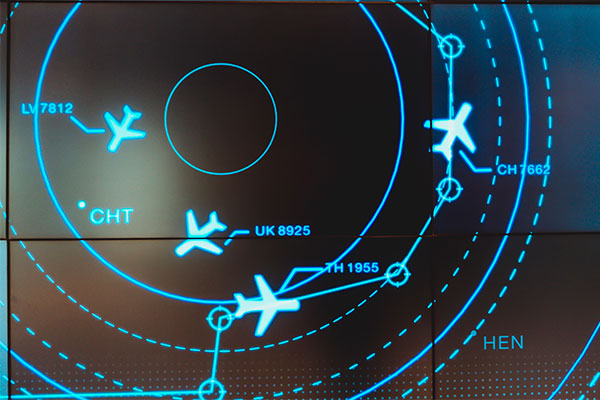The Civil Aviation Authority (CAA) has presented its ambitious delivery plan for the transformation of UK airspace, projecting improvements up to 2040.
Aimed at enhancing efficiency and integrating emerging technologies, the plan requires substantial collaboration across the aviation sector to ensure success.
The CAA has emphasised the significance of its deployment plan, which represents a milestone in the modernisation of airspace. This document, ‘Airspace Modernisation Strategy, Part 3: Deployment Plan’, outlines essential changes anticipated within the UK airspace over the next seven years.
The plan details activities and milestones necessary for the industry and regulator, with the introduction of required regulatory frameworks. It aims to align the industry with new technologies, promoting safer and more efficient air travel.
With rapidly advancing technologies, the plan thoroughly evaluates the incorporation of drones and vertical take-off and landing (VTOL) aircraft within existing airspace structures.
The integration process will involve updated services to support airspace users and advanced technology for collision avoidance among aircraft. Ensuring these innovations are safely included is crucial to the plan’s success.
According to CAA chief executive Rob Bishton, overhauling airspace is both complex and essential, demanding concerted efforts from the aerospace industry.
Bishton describes the document as a blueprint for collaboration, outlining strategic priorities and serving as a framework for accountability and industry engagement. He emphasises the need for unified action towards a modernised airspace.
He states, “Our delivery plan sets out the main priorities, providing a framework for co-ordinated action and accountability.”
Aviation minister Mike Kane supports the initiative, underscoring the technological revolution in aviation that necessitates airspace evolution.
He highlights the plan’s potential to reduce delays, facilitate decarbonisation efforts, and minimise noise pollution.
Kane asserts that integrating these innovations will ensure safe and effective airspace management, aligning with broader sustainability goals.
The CAA plans to work closely with the Airspace Change Organising Group, Ministry of Defence, and NATS Enroute Ltd (NERL) to realise this modernisation.
Collaboration will focus on shared responsibilities and the co-ordination of ongoing and upcoming projects.
This joint effort is expected to enhance efficiency and drive technological advancement across the sector.
Projects outlined in the Deployment Plan are already underway or scheduled to commence within the next two years, with broader activities planned over the subsequent five years.
The revised strategy incorporates input from various industry stakeholders, ensuring that the deployment aligns with the changing dynamics of the aerospace sector.
These milestones aim to establish a clear path towards a modernised and efficient airspace by 2040.
The modernisation strategy coincides with global standards, aiming to integrate seamlessly with international air traffic management systems.
This alignment is crucial for ensuring that UK airspace can accommodate global traffic patterns, enhancing overall safety and efficiency.
In essence, the CAA’s strategy represents a pivotal step towards a modernised airspace, rooted in collaboration and technological advancement.
By addressing emerging industry needs and setting a clear framework, the UK aims to lead in airspace innovation by 2040.

